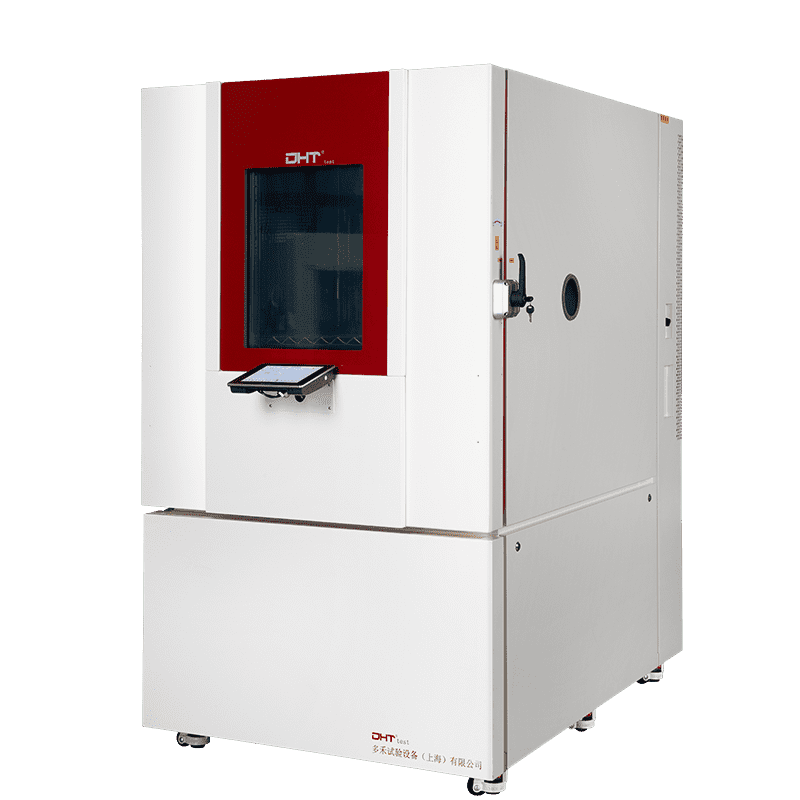Simulation Testing — Scientific Reproduction of Real-World Environments
- Typical test parameters include temperature, humidity, pressure, ultraviolet exposure, and other natural environmental factors.
- The objective is to ensure the product functions reliably within the expected environmental range and to prevent failures caused by environmental changes.
Stimulation Testing — Accelerated Screening of Latent Failures
- These tests commonly include sudden temperature changes, mechanical vibrations, electrical shocks, and other forms of stimuli.
- The goal is to uncover hidden faults that are unlikely to appear under normal use but may cause failures over time.
Differences and Complementarity Between Simulation and Stimulation Testing
| Dimension | Simulation | Stimulation |
| Testing Objective | Replicate real-world operating conditions to verify functionality and environmental robustness | Accelerate defect detection to ensure long-term durability |
| Application Stage | Design validation and early development phase | Production quality screening and lifespan prediction |
| Type of Stress | Environmental stresses (temperature, humidity, light exposure, etc.) | Combined stresses (thermal shocks, vibration, electrical surges, etc.) |
| Failure Mechanism | Detect insufficient environmental adaptability | Trigger latent defects leading to failure |
Three Typical Forms of Rapid Thermal Stress in Stimulation Testing
- Thermal Shock Test
- Core Feature: Extremely rapid temperature transitions; the fastest among the three.
- Temperature Change Rate: Typically greater than 30°C/min (air-to-air method) or greater than 60°C/min (liquid immersion), with stepwise temperature changes at the transition.
- Primary Objectives:
- Induce stress failures caused by mismatched coefficients of thermal expansion (CTE) between materials such as chips, substrates, solder, and encapsulants (e.g., solder joint cracking, delamination, package fractures).
- Assess material brittleness or degradation under severe temperature gradients.
- Typical Applications: Electronic components (ICs, resistors, capacitors), PCB assemblies, aerospace parts, military products, and automotive electronics.
- Rapid Temperature Change Test / Rapid Thermal Cycling
- Core Feature: Linear temperature cycling at a relatively fast rate, but transitions are gradual rather than abrupt.
- Temperature Change Rate: Generally between 5°C/min and 30°C/min (common standard rates include 10°C/min, 15°C/min). Transition time depends on temperature range and rate.
- Primary Objectives:
- Simulate rapid temperature changes experienced during actual use or transportation (e.g., day-night temperature shifts, device power cycling).
- Accelerate thermal fatigue failures such as solder joint cracking, connector contact degradation, and coating cracking.
- Screen process defects like cold solder joints or micro-cracks.
- Differences from Thermal Shock:
- Transitions are gradual and linear, not stepwise.
- Typically performed within a single chamber.
- Temperature differentials are usually smaller than thermal shock tests but can still be substantial.
- Focuses more on thermal fatigue and realistic environment simulation.
- Typical Applications: Complete products (servers, communication devices, automotive control units), large PCB assemblies, modules, and consumer electronics.
- Temperature Cycling Test / Thermal Cycling
- Core Feature: Slow temperature cycling with the lowest ramp rates among the three.
- Temperature Change Rate: Usually ≤ 5°C/min, with longer transition times.
- Primary Objectives:
- Simulate long-term, slow temperature cycles occurring over product lifespan (e.g., seasonal or day-night changes).
- Induce long-term thermal fatigue to assess reliability and predict lifespan of solder joints, BGAs, connectors, etc.
- Evaluate material stability under prolonged thermal stress.
The Crucial Role of Environmental Test Chambers in Simulation and Stimulation Testing
- En simulation testing, chambers such as temperature and humidity chambers, salt spray chambers, and UV aging chambers simulate the natural conditions products will face to verify environmental robustness.
- En stimulation testing, chambers like thermal shock chambers, rapid temperature cycling chambers, and combined environmental chambers impose rapid temperature changes and complex stressors to reveal latent failures and ensure long-term reliability.
Conclusion
- Simulation testing focuses on replicating real-world environments to validate product adaptability during the design phase;
- Stimulation testing applies more severe stresses to accelerate defect exposure and ensure durability.
FAQ
Qu'est-ce que le test de simulation ?
Les tests de simulation impliquent de recréer artificiellement les conditions réelles auxquelles un produit sera confronté, telles que la température, l'humidité, la pression et l'exposition à la lumière, pour vérifier ses performances et la robustesse de sa conception. Ces tests garantissent que le produit peut fonctionner de manière fiable dans la plage environnementale prévue et aident les ingénieurs à identifier toute faiblesse dans l'adaptabilité aux conditions environnementales.
Qu'est-ce que le test de stimulation et en quoi diffère-t-il du test de simulation ?
Les tests de stimulation appliquent des contraintes au-delà des conditions de fonctionnement normales—comme des variations soudaines de température, des vibrations ou des chocs électriques—pour accélérer l'exposition des défauts cachés. Contrairement aux tests de simulation, qui se concentrent sur la réplication des environnements réels, les tests de stimulation visent à découvrir rapidement les défaillances potentielles et à assurer la durabilité à long terme du produit.
Quel rôle jouent les chambres d'essai environnementales dans les tests de simulation et de stimulation ?
Les chambres d'essai environnementales sont essentielles pour effectuer des tests de simulation et de stimulation. Les chambres telles que les chambres thermiques et d'humidité, les chambres de brouillard salin et les chambres de vieillissement UV simulent les conditions environnementales naturelles. Les chambres de choc thermique et les chambres de cyclage rapide de température appliquent des contraintes combinées pour accélérer la détection des défauts. Le choix de la bonne chambre et des protocoles de test est essentiel pour améliorer la précision et la fiabilité des tests.


